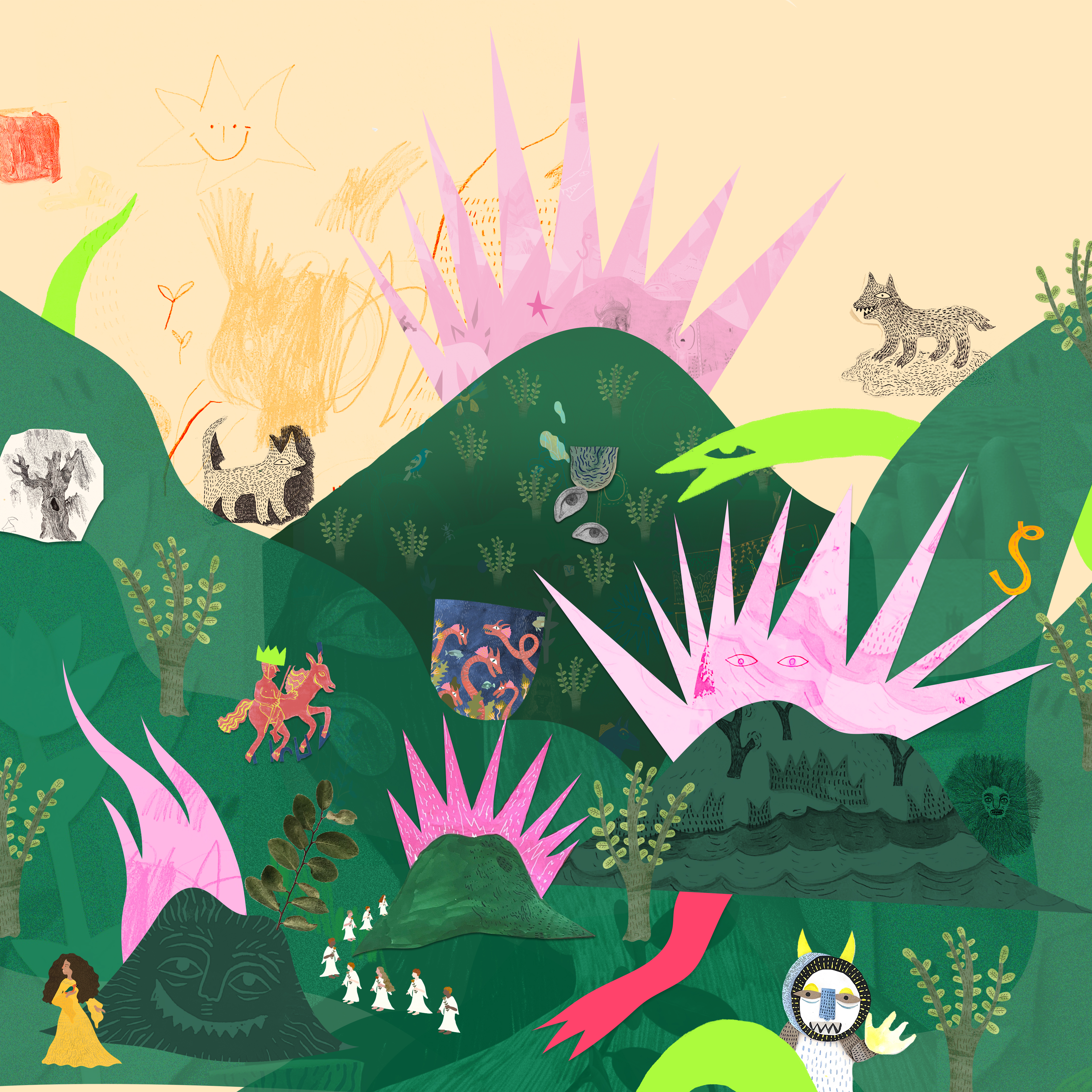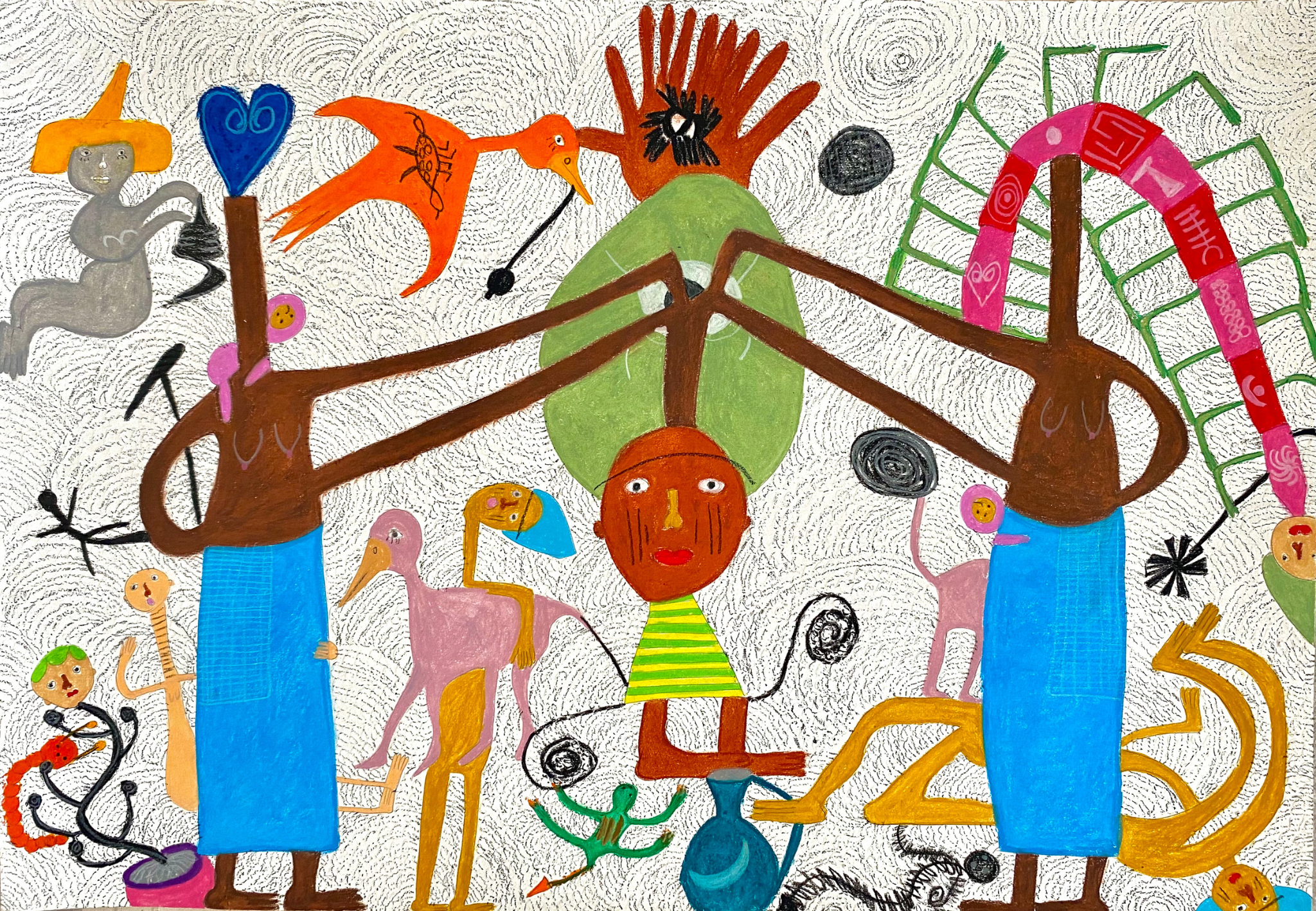“Kim, There are People Dying!”
Popular Culture as a working archive for assimilation/resistance
“The Move away from state and institutional archives as ideal documentation of “national consciousness” has taken seriously the significance of popular culture as tentative collections material that describes the emergence of communities, their persistence and survival, often around public (circulating, contagious, shareable, teachable) feelings: pleasure, joy, and pride, but also defeat, embarrassment, betrayal, and hopelessness. These Communal configurations have given plasticity the categories of identity used uncritically in institutional political representation”
(Altinay & Ajokic, 2021)
The exhibition delves into the role of popular culture as an archival medium, emphasising the inclusion of often overlooked narratives from minority groups (namely POC, femme and queer). It examines how such inclusion, whether through the participating artists' choice of medium, subject matter, or process, shapes identity and enriches the pop culture archive with diversity and complexity. The showcase features artists who address intricate personal and societal issues through irony, playfulness, dark humour and pastiche.
"Kim, There are People Dying" references a notable moment involving Kim Kardashian being driven hysterical over losing an earring that is essentially worth pocket change to her. This brings into focus the exhibition's critiques of consumerism and the trivial concerns of the privileged compared to global atrocities. The title, therefore, speaks to the incredible juxtaposition intrinsic to pop culture - the push and pull of the constant tension between reality, traditional media, and online culture is where the exhibition is located.
Above: Gabriele Jacobs, Chimera, 2022, ceramic and sheepskin, 140 x 70 x 55 cm, R24 000 ex VAT

"If you keep up with pop culture, everybody knows the joke."
- Shawn Wayans

Demonstrating candidly how even through critique or intentional resistance, pop culture, and subsequently the system of capitalism is at this point inescapable, good good boy (Meghan Daniels) and Andrew Mogridge’s use of satire, comedy, and irony is reminiscent of the pop art movement in their work, and critiques contemporary consumerism and media saturation while also reflexively taking part in it.
The exhibition therefore suggests that popular culture serves as a dynamic archive, capable of documenting diverse experiences and reflecting changes in society, identity, and politics. Sitaara Stodel’s work is of interest here as she curates and reinterprets ways of being through her collage artworks, incessantly disassembling and reassembling domestic scenes we have all come to know so well, but striving to reconstruct her memories and subsequently, the world around her. Further highlighted by Emily Lacon-Allin’s uniquely personal collage technique, she rips up and reassembles old canvas paintings as a trauma response to reinterpret the idealised concept of victimhood.
Finally, we can look to Charity Vilakazi’s highlighting African women in folktales that illustrate the liberated and disruptive potential of female power, resilience, wisdom and agency. On the contrary however, Folklore is also something often co-opted by popular culture, therefore the exhibition allows the tension of Vilakazi’s work to explore idealised (western) notions of women in the mass consumption of pop culture by introducing these themes in an accessible and inviting manner.
The exhibition explores ways in which the medium and message both reinforce and reinterpret the archive's traditional, often exclusionary ideals by using pop culture/what has historically been deemed as ‘low art’ to express their identities and thus challenge these original archival definitions. In fact pop culture itself, constantly resisting steadfast and concrete definitions, makes alternative mediums the perfect vehicle to explore both identity formation as well as interpreting local context through a popular culture lens, as the two seem to inform and reinforce one another.
Challenging traditional archival definitions as relative to identity expression, particularly among minority groups, Neil Badenhorst and Gabriele Jacobs speak to the queering of these themes in both their mediums and messages consisting relatively of digital collage, illustration and sculptural forms.
Below:Neil Badenhorst, I-T-G-I-R-L, 2024, Digital Media Print, 29.5 x 39.2 cm, open edition, R850 ex VAT


Artists

EXCLUSIVE WITH THE CURATOR!
Raelee Seymour-Brown is a multimedia artist, designer and curator from Johannesburg, South Africa.
With an aesthetic focus on novelty, irreverence and the unseen, Raelee's work divulges the potency of what is often considered mundane, exploring the intricacies and complexities of the pop culture zeitgeist through a variety of mediums including digital illustration, writing, ceramic works, fashion and design.
Navigating the ephemerality the world currently demands of us through the lens of so many multiplicitous forms and mediums in an attempt to constantly seek understanding is where Raelee's true joy can always be found

Charity Vilakazi, Konke Kusekhanda Lakho, 2024, Ibomvu and mixed media on Fabriano, 70 x 100 cm, R35 000 (framed) ex VAT
To enquire about any of the artworks above
Proudly brought to you by Rand Merchant Bank
and supported by Business and Arts South Africa
Read more about CuratorLab and the mentors
Further Reading In Articles
African Artist Directory


































